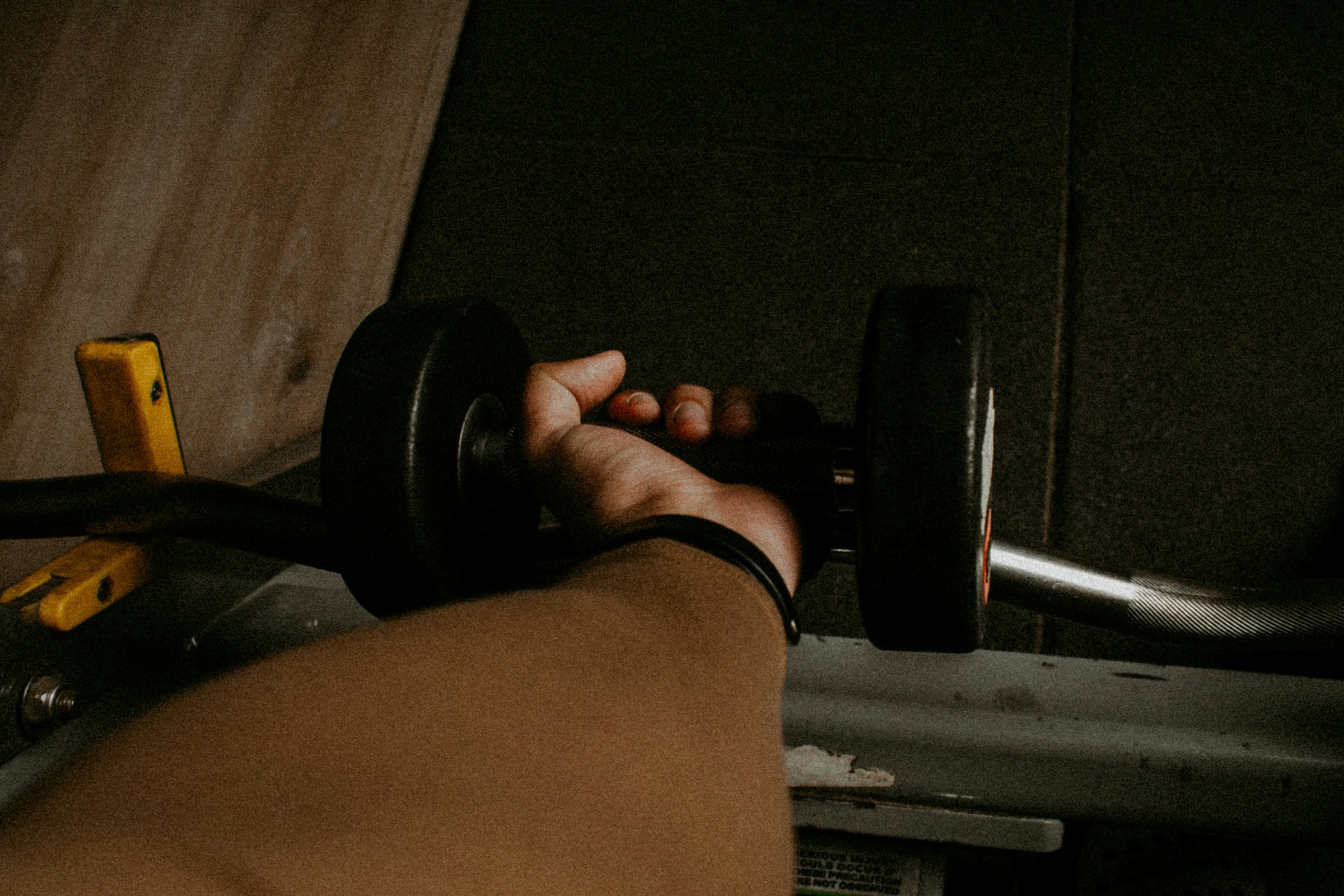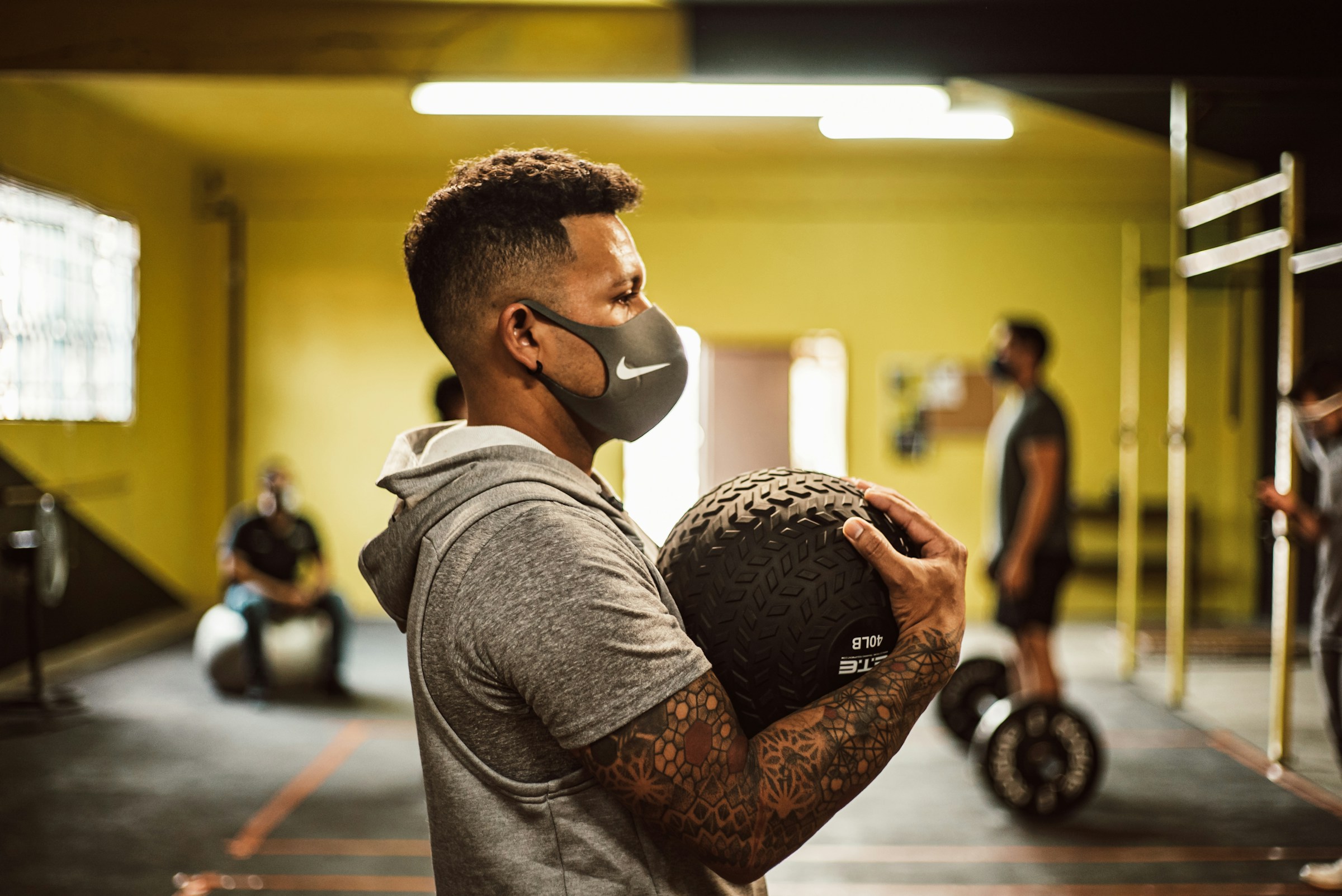Table of Contents

Grip Strength Standards By Age And Gender
Have you ever attempted a heavy deadlift only to be stopped by your grip? You might have gotten stuck at a hard-to-believe weight just off the ground, wondering how you could lift more than that with your legs and back, but couldn't even budge the bar. If you find yourself in a similar scenario, you're not alone. Grip strength is often overlooked when lifting and can be particularly frustrating when it limits our performance in a particular lift. Understanding the average deadlift weight for your age and experience level can help you set realistic strength goals and track your progress effectively. In this article, we'll cover grip strength standards, their meaning, why they matter, and how they can help you improve your deadlift. You will also learn about grip strength standards by age and gender, and how to use this information to assess your grip strength and set realistic goals for improvement.
Liftoff’s workout tracker app can help you learn about average incline dumbbell press performance and use that information to reach your goals. The app breaks down each lift to provide information on performance targets for your level and how to improve over time.
What is Grip Strength?
 Grip strength refers to how tightly you can hold something in your hand and how long you can hold it for, compared to how heavy that something is. Grip strength is how much force you can create with all the muscles in your hand:
Grip strength refers to how tightly you can hold something in your hand and how long you can hold it for, compared to how heavy that something is. Grip strength is how much force you can create with all the muscles in your hand:
Fingers
Hands
Forearms
Upper arms
There are three main ways to grip onto something, according to Davis.
1. Pinch Grip Strength
When you’re gripping something between your thumb and four fingers, when opening a tub of peanut butter or rock climbing, you’re using your pinch grip strength.
2. Crush Grip Strength
You're calling on your crush grip strength when grasping something between your digits and palm. For example, when pulling a bar during a deadlift, or holding a water bottle.
3. Hold Grip Strength
When you’re hanging onto something for a long ass period
Whether that’s hanging from monkey bars
Hanging onto a briefcase
There are also a couple of different accepted ways of measuring grip strength:
Handgrip dynamometer: Hold the dynamometer up with your arm at a 90-degree angle, then squeeze the grip measurement mechanism as hard as possible. Watch this video for a demonstration.
Weight scale: You pushed down on the scale with one hand as hard as possible, with the heel of your hand on the top and your fingers wrapped around to the bottom.
Related Reading
Grip Strength Standards by Age and Gender

Grip strength standards vary by age, gender, and several other factors. Understanding these metrics can help you determine your grip strength goals as you age.
Research shows that both men and women see a decline in grip strength as they age, but men start at a higher baseline and typically have better grip strength at every age. An 18 to 24-year-old man averages 103.6 pounds of grip strength, while an 18 to 24-year-old woman averages 61.9 pounds. As both sexes age, they experience a gradual decrease in grip strength, which can be mitigated with regular strength training.
Grip Strength Standards for Men
Grip strength tends to peak for men in their late 20s to early 30s. After that, it gradually declines, averaging 102 to 109 pounds in their 30s. By age 40, grip strength decreases slightly, and continues to drop as men reach their 80s, averaging around 61.9 pounds.
Grip Strength Standards for Women
Women also experience a peak in grip strength in their late 20s to early 30s, with a gradual decline in strength starting around age 40. By the time they reach their 80s, women average 43.9 pounds of grip strength. The loss of grip strength in women tends to occur more gradually than in men, but the same age-related factors still impact it.
Liftoff: Gamify Your Workouts and Track Your Progress
Pull-ups are a great measure of upper-body strength regardless of where you start, and improving your numbers is a rewarding challenge! Transform your fitness journey with Liftoff, the ultimate workout tracker that turns every rep into a milestone.
Liftoff is your fitness companion, more than just an app that ranks your performance. It connects you with a global community of over 1 million lifters and gamifies your workout experience.
Liftoff: Track, Compete, and Achieve Your Fitness Goals
Track 400+ exercises with:
Detailed visualizations
Compete on global leaderboards
Earn rewards
That motivates you through daily challenges and achievements. Whether a fitness novice or a seasoned athlete, Liftoff's intuitive interface adapts to your unique goals, making progress tracking seamless and enjoyable.
Customize your workouts, share your wins, and join a vibrant community celebrating every milestone. Download our workout tracker app now and turn your fitness goals into an exciting, competitive adventure where every workout counts.
Why Grip Strength Matters
 Grip strength is closely tied to mobility. People with physical limitations often have decreased grip strength. It makes sense. Strong hands and fingers help us perform daily activities, like opening jars, that are frequently overlooked until we struggle with them.
Grip strength is closely tied to mobility. People with physical limitations often have decreased grip strength. It makes sense. Strong hands and fingers help us perform daily activities, like opening jars, that are frequently overlooked until we struggle with them.
When this happens, it’s likely a sign that we’re losing strength and may encounter difficulty with more physically demanding tasks, like walking. Strong grip performance can help us maintain independence and a healthy quality of life as we age.
Grip Strength: An Indicator of Overall Strength
Grip strength is a reliable indicator of overall strength. Research shows that people with higher grip strength tend to have better scores on tests of overall physical strength. While this may not always apply to every individual case, measuring grip strength and leg strength can help provide a more accurate understanding of an individual’s overall strength.
Grip Strength and Cognitive Function: What’s the Connection?
Research shows that people with good grip strength score better on cognitive function tests, including working memory and processing speed. They’re also less likely to have thinking problems as they age.
While scientists are still unraveling the connection between grip strength and cognitive function, it’s possible that both are affected by similar lifestyle and health factors.
Grip Strength and Bone Health: What’s the Connection?
Low grip strength is correlated with low bone mineral density. It’s a decisive risk factor for osteoporosis, when your bones get thinner. People with low grip strength are also more likely to have hip fractures and fragility fractures.
Fragility fractures are fractures that happen from a fall of standing height or less.
Grip Strength and Heart Health: What’s the Connection?
Research shows that decreased grip strength is associated with measures of heart health. For each 11-pound decrease in grip strength, there was a 16 percent increase in deaths from any cause, a 17 percent increase in deaths from heart disease, a nine percent increase in the risk of having a stroke, and a seven percent increase in the risk of having a heart attack.
Related Reading
How to Improve Your Grip Strength
 Improving your grip strength can be as simple as making minor changes to your daily activities or as structured as following a dedicated strength training program. Daily tasks like:
Improving your grip strength can be as simple as making minor changes to your daily activities or as structured as following a dedicated strength training program. Daily tasks like:
Washing your car by hand
Shoveling snow
Carrying groceries
Regularly squeezing a stress or tennis ball can enhance your hand and finger strength. These minor adjustments improve grip, make everyday tasks more manageable, and reduce the risk of hand fatigue and injuries.
Targeted Exercises for Grip Strength
Incorporating strength training exercises is key for those looking to take grip training to the next level. Resistance training using body weight, free weights, or resistance tubes can all contribute to improved grip.
Start with exercises like:
Dead hangs
Farmer's carries
Wrist curls
Specifically targeting grip strength. When lifting weights, focus on maintaining proper form and using a challenging but manageable resistance level, aiming for 12 to 15 repetitions per set. As your muscles adapt, gradually increase the weight to continue making progress.
Start Slow and Seek Help if You Need It
Warming up before training and allowing adequate rest between sessions is essential to prevent strain or injury. If you’re new to strength training or returning after a long break, consulting a fitness professional or healthcare provider can help you design a program that suits your needs.
Grip strength isn’t just about improving gym performance; it’s a crucial component of overall health, functional fitness, and injury prevention.
Related Reading
Join over 1 Million Lifters Today -Download Liftoff
Liftoff is the perfect app to help you track and improve your performance on deadlifts and other exercises. This workout tracker enables you to break down your workouts into measurable goals, so you can make steady progress and stay motivated. Liftoff also connects you to a community of lifters who can support your journey.
Ready to take your fitness journey to the next level?
Download Liftoff now and start tracking your workouts, setting goals, and achieving results!


More Articles
Loading more articles...